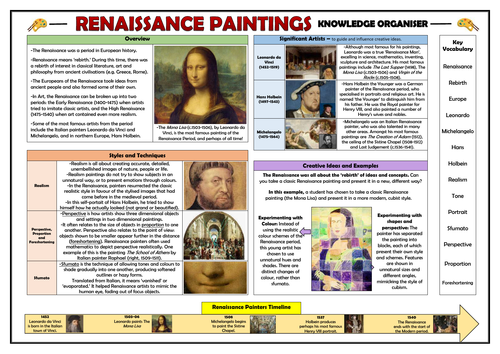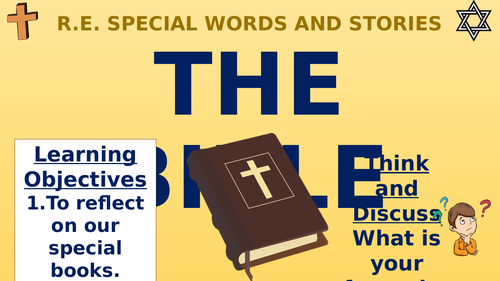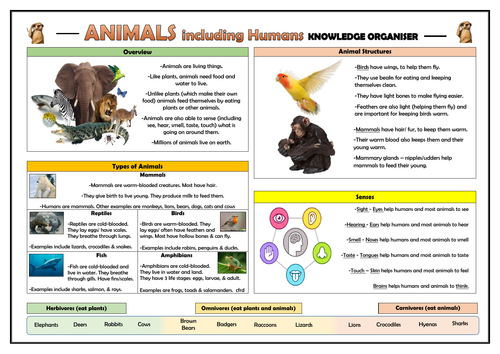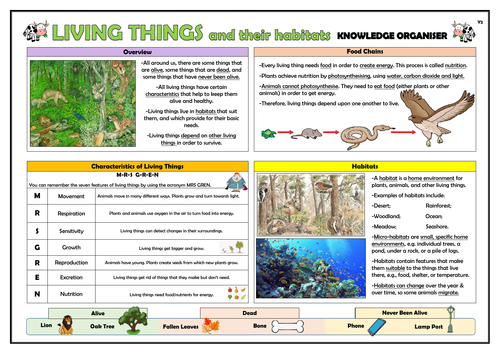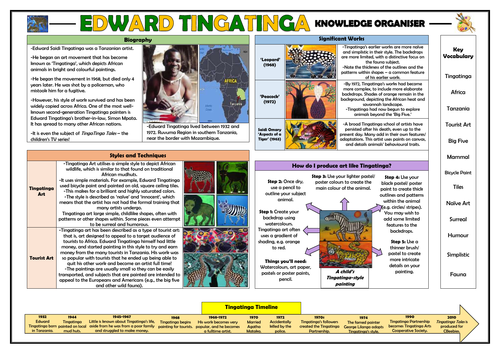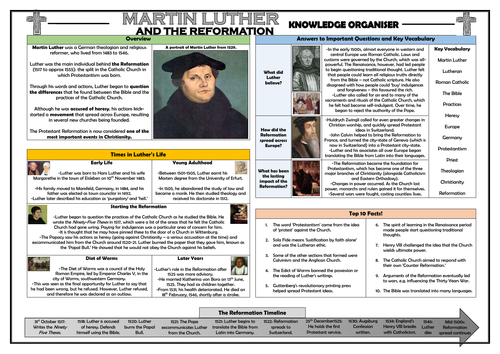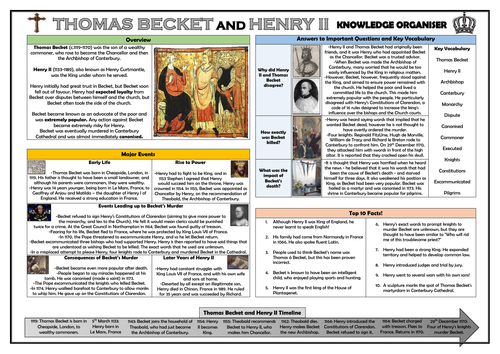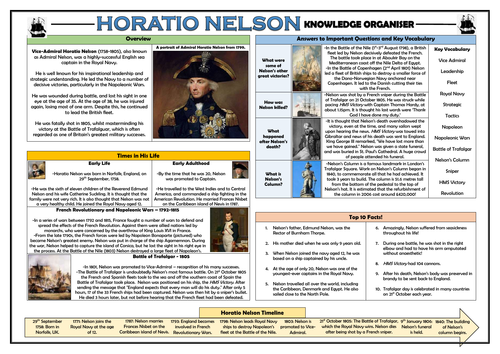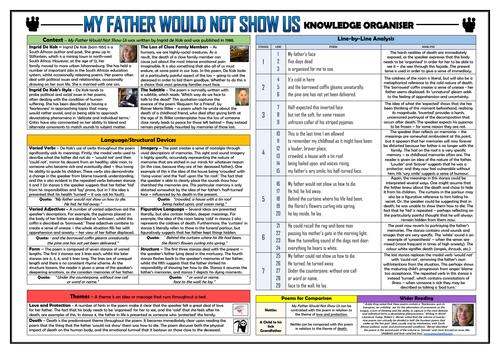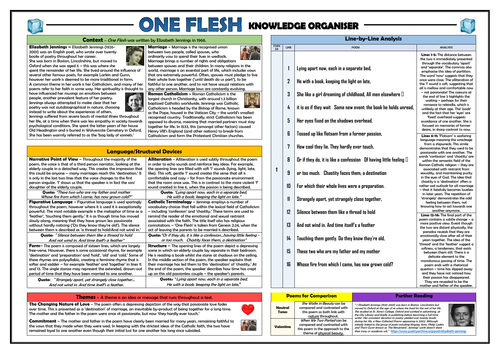
3k+Uploads
1952k+Views
2270k+Downloads
Whole school

Ocean Creatures Drawings - KS1 Art Knowledge Organiser!
This clear, detailed and visually-appealing resource offers a complete reference point for students learning to draw ocean creatures art as a part of their KS1 art and design study.
It contains comprehensive sections on:
-Overview;
-Styles and Techniques;
-Significant Artists (Axel Scheffler, Mike Brennan, Guy Harvey);
-Creative Ideas and Examples;
-Key Vocabulary;
-How to Draw a Basic Crab.
This resource can be adapted for all ages, but was originally designed for KS1 children.
The resource is designed to be printed onto A3, and is provided as both a PDF and a Word version (so that you can edit if you want to). All images used are licensed for commercial use and are cited on a separate document (included).

Renaissance Paintings - Art Knowledge Organiser!
This clear, detailed and visually-appealing resource offers a complete reference point for students learning about Renaissance paintings art as a part of their art and design study.
It contains comprehensive sections on:
-Overview;
-Styles and Techniques;
-Significant Artists (Leonardo da Vinci, Hans Holbein, Michelangelo);
-Creative Ideas and Examples;
-Key Vocabulary;
-Timeline of Local Painters.
This resource can be adapted for all ages, but was originally designed for KS2 children.
The resource is designed to be printed onto A3, and is provided as both a PDF and a Word version (so that you can edit if you want to). All images used are licensed for commercial use and are cited on a separate document (included).

War of the Worlds - Comprehension Activities Booklet!
This resource booklet contains a wide range of age-appropriate, engaging, and original comprehension activities for use throughout the reading of H.G. Wells’ ‘The War of the Worlds.’ Teachers have found them particularly useful in exam revision, comprehension tasks, or guided reading sessions.
They are perfect for aiding the progress of students towards meeting the KS4 expectations within the National Curriculum framework - this makes the tasks suitable for all examining bodies. Students have found these resources extremely engaging, and for teachers there is explicit information within each task regarding which comprehension strands the task is designed to demonstrate.
They also relate to key extracts, characters, and themes from the story, ensuring that students gain a deep understanding of the text.
Activities within the booklet include:
‘Context: Victorian Britain - to aid students with ‘Drawing on knowledge of the purpose, audience and context of the writing, including its social, historical and cultural context and the literary tradition to which it belongs, to inform evaluation;’
‘Wells’ Description’ - to aid students with ‘Analysing a writer’s choice of vocabulary, form, grammatical and structural features, and evaluating their effectiveness and impact;’
‘The Artilleryman’, ‘The Martians’ and ‘The Narrator’s Brother’ - to aid students with ‘Seeking evidence in the text to support a point of view, including justifying inferences with evidence;’
‘Editing the Text’ - to aid students with ‘Making an informed personal response, recognising that other responses to a text are possible and evaluating these.’
Plus many, many more activities (the booklet is around 30 pages in length!) I’ve also added it as a PDF in case the formatting differs on your computer.
All images are licensed for commercial use, and are cited on a separate document (included).

KS1 RE - Special Words and Stories - Personal Beliefs!
In this engaging and important lesson, students explore the concepts of facts and beliefs. They discover how people have many different beliefs, and that Christians believe the words and stories of the Bible. They explore the Easter Story, recognising that there are elements of religious stories such as this that require faith and belief.
The learning is guided by a clear and colourful PowerPoint presentation, which guides students through the following step-by-step journey:
-Reflecting on and recalling knowledge that they already have of the Bible;
-Defining the key terms ‘fact’ and ‘belief’ and differentiating between the two;
-Understanding that the Bible is the text that forms of the basis of Christian beliefs, and watching a Bible story about Jesus’ death and resurrection;
-Discussing how some elements of the Easter story cannot be proven to be true, but are widely-held Christian beliefs;
-Completing a creative, extended learning activity based on designing Easter Gardens.
-Self-reflecting on the extent to which they feel they have met the learning objective.
This resource pack includes the comprehensive PowerPoint presentation (16 slides) and the hyperlinks to the video resource in the development activity. There is everything that you need here to teach the lesson.
In the past, I have used this lesson with children from across Key Stage 1 - the key learning is aligned with curriculum expectations for RE, and also the content prescribed by most diocese regions. All images are licensed for commercial use.

KS1 RE - Special Words and Stories - The Bible!
In this engaging lesson, students develop their understanding of the Bible, and why it is special to Christians. They also consider the words and stories that are meaningful to themselves. It was originally taught as a part of an RE unit on ‘Special Words and Stories.’
The learning is guided by a clear and colourful PowerPoint presentation, which guides students through the following step-by-step journey:
-Thinking about which stories are meaningful to them, and why they hold special meaning;
-Introducing children to the Bible, and developing their understanding about who it was written by, how it is structured, and the different types of writing that we can be found within it;
-Understanding why the Bible is special to Christians, including reflecting on a child-friendly version of The Good Samaritan, to demonstrate how Bible stories teach Christians important messages;
-Completing a plenary activity to assess their understanding;
-Self-reflecting on the extent to which they feel they have met the learning objective.
This resource pack includes the comprehensive PowerPoint presentation (15 slides) and the hyperlinks to the video resource in the development activity. There is everything that you need here to teach the lesson.
In the past, I have used this lesson with children from across Key Stage 1 - the key learning is aligned with curriculum expectations for RE, and also the content prescribed by most diocese regions. All images are licensed for commercial use.

Year 1 Animals including Humans Knowledge Organiser!
This clear, detailed and visually-appealing resource offers a complete reference point for Year 1 children, teachers and parents covering knowledge relating to ‘Animals including Humans’, as a part of their science learning. It contains comprehensive sections on:
Overview;
Types of Animals (mammals, reptiles, amphibians, birds and fish);
Herbivores, Carnivores and Omnivores;
Comparing Animal Structures;
Senses;
Key Vocabulary (underlined).
The content is fully aligned with the NC expectations for Year 1 children relating to ‘Animals including Humans:’
-identify and name a variety of common animals including fish, amphibians, reptiles,
birds and mammals
-identify and name a variety of common animals that are carnivores, herbivores and
omnivores
-describe and compare the structure of a variety of common animals (fish,
amphibians, reptiles, birds and mammals, including pets)
identify, name, draw and label the basic parts of the human body and say which part of the body is associated with each sense.
The resource is designed to be printed onto A3, and is provided as both a PDF and a Word version (so that you can edit if you want to). All images used are licensed for commercial use and are cited on a separate document (included).

Year 2 Living Things and their Habitats Knowledge Organiser!
This clear, detailed and visually-appealing resource offers a complete reference point for Year 2 children, teachers and parents covering knowledge relating to ‘Living Things and their Habitats’, as a part of their science learning. It contains comprehensive sections on:
Overview;
Characteristics of Living Things;
Alive, Dead, and Never Been Alive;
Food Chains;
Habitats;
Key Vocabulary (underlined).
The content is fully aligned with the NC expectations for Year 2 children relating to ‘Living Things and their Habitats:’
-explore and compare the differences between things that are living, dead, and things that have never been alive;
-identify that most living things live in habitats to which they are suited and describe;
how different habitats provide for the basic needs of different kinds of animals and
plants, and how they depend on each other;
-identify and name a variety of plants and animals in their habitats, including microhabitats;
-describe how animals obtain their food from plants and other animals, using the idea of a simple food chain, and identify and name different sources of food.
The resource is designed to be printed onto A3, and is provided as both a PDF and a Word version (so that you can edit if you want to). All images used are licensed for commercial use and are cited on a separate document (included).

Writing Non-Chronological Reports - KS1 Knowledge Organiser!
This clear, detailed and visually-appealing resource offers a complete reference point for year 1 and 2 children when writing non-chronological reports. The organiser is also perfect for teachers, parents and English subject leaders - aiding their planning and supporting of children’s knowledge development for this writing text type.
The organiser has a particular focus on the content, language and structural features required to write effective non-chronological reports at KS1. It contains distinct sections covering:
-An Overview of Non-Chronological Reports;
-Content: Title and Introduction, Main Body, Key Features to Include;
-Language:Vocabulary Choices, Tone, Tense, Conjunctions, Cause and Effect Techniques, Adverbs, Conjunctions, Punctuation Checklist and Word Mat;
-Structure - Paragraphs, Whole Text Cohesion, Images and other tips;
-Key Vocabulary
The content is fully aligned with the age-related expectations for KS1 children in writing. The resource is designed to be printed onto A3, and is provided as both a PDF and a Word version (so that you can edit if you want to). All images used are licensed for commercial use and are cited on a separate document (included).

Writing Non-Chronological Reports - Upper KS2 Knowledge Organiser!
This clear, detailed and visually-appealing resource offers a complete reference point for year 5 and 6 children when writing non-chronological reports. The organiser is also perfect for teachers, parents and English subject leaders - aiding their planning and supporting of children’s knowledge development for this writing text type.
The organiser has a particular focus on the content, language and structural features required to write effective non-chronological reports at upper KS2. It contains distinct sections covering:
-An Overview of Non-Chronological Reports;
-Content: Title and Introduction, Main Body, Key Features to Include;
-Language: Vocabulary Choices, Tone, Tense, Conjunctions, Cause and Effect Techniques, Adverbs, Conjunctions, Punctuation Checklist and Word Mat;
-Structure - Paragraphs, Whole Text Cohesion, Images and other tips;
-Key Vocabulary
The content is fully aligned with the age-related expectations for upper KS2 children in writing. The resource is designed to be printed onto A3, and is provided as both a PDF and a Word version (so that you can edit if you want to). All images used are licensed for commercial use and are cited on a separate document (included).

Writing Non-Chronological Reports - Lower KS2 Knowledge Organiser!
This clear, detailed and visually-appealing resource offers a complete reference point for year 3 and 4 children when writing non-chronological reports. The organiser is also perfect for teachers, parents and English subject leaders - aiding their planning and supporting of children’s knowledge development for this writing text type.
The organiser has a particular focus on the content, language and structural features required to write effective non-chronological reports at lower KS2. It contains distinct sections covering:
-An Overview of Non-Chronological Reports;
-Content: Title and Introduction, Main Body, Key Features to Include;
-Language:Vocabulary Choices, Tone, Tense, Conjunctions, Cause and Effect Techniques, Adverbs, Conjunctions, Punctuation Checklist and Word Mat;
-Structure - Paragraphs, Whole Text Cohesion, Images and other tips;
-Key Vocabulary
The content is fully aligned with the age-related expectations for lower KS2 children in writing. The resource is designed to be printed onto A3, and is provided as both a PDF and a Word version (so that you can edit if you want to). All images used are licensed for commercial use and are cited on a separate document (included).

Edward Tingatinga - Knowledge Organiser!
This clear, detailed and visually-appealing resource offers a complete reference point for students learning about the artist Edward Tingatinga, and the Tingatinga artistic movement, as a part of their art and design study.
It contains comprehensive sections on:
-Biography of the Artist;
-Styles and Techniques;
-Tingatinga Timeline;
-Significant Works;
-Key Vocabulary;
-How do I create art like Tingatinga?
This resource can be adapted for all ages, but was originally designed for KS2 children.
The resource is designed to be printed onto A3, and is provided as both a PDF and a Word version (so that you can edit if you want to). All images used are licensed for commercial use and are cited on a separate document (included).

Luther and the Reformation Knowledge Organiser!
This clear, detailed and visually-appealing resource offers a complete reference point for children learning about Martin Luther and the Protestant Reformation. It contains comprehensive sections entitled:
Overview;
Times in Luther’s Life;
Important Vocabulary;
Reformation Timeline;
Answers to the Important Questions;
Top Ten Facts.
The resource is designed to be printed onto A3, and is provided as both a PDF and a Word version (so that you can edit if you want to). All images used are licensed for commercial use.

Thomas Becket and Henry II - Knowledge Organiser!
This clear, detailed and visually-appealing resource offers a complete reference point for children learning about Thomas Becket and Henry II. It includes details of their lives leading up to and including the murder of Becket in 1170. It contains comprehensive sections entitled:
Overview;
Major Events;
Important Vocabulary;
Thomas Becket and Henry II Timeline;
Answers to the Important Questions;
Top Ten Facts.
The resource is designed to be printed onto A3, and is provided as both a PDF and a Word version (so that you can edit if you want to). All images used are licensed for commercial use.

Horatio Nelson Knowledge Organiser!
This clear, detailed and visually-appealing resource offers a complete reference point for students learning about Horatio Nelson. It is particularly useful for those studying significant individuals or great leaders. It contains comprehensive sections entitled:
Overview;
Times in Nelson’s Life;
Important Vocabulary;
Horatio Nelson Timeline;
Answers to the Important Questions;
Top Ten Facts.
The resource is designed to be printed onto A3, and is provided as both a PDF and a Word version (so that you can edit if you want to). All images used are licensed for commercial use.

Sonnet 43: 'How do I love thee?' Knowledge Organiser/ Revision Mat!
This detailed and visually-appealing resource offers a complete reference point for students learning or revising Elizabeth Barrett Browning’s love and relationships poem 'Sonnet 43: 'How do I love thee?’ It contains comprehensive sections on:
Context;
Line-by-Line Analysis;
Poetic Devices/ Language Devices;
Themes;
Form/Structure;
Poems for Comparison;
The Poet’s Influences.
Key words and ideas are underlined for easy reference. The resource is designed to be printed onto A3, and is provided as both a PDF and a Word version (so that you can edit if you want to). All images used are licensed for commercial use and are cited on a separate document (included).

Nettles - Vernon Scannell - Knowledge Organiser/ Revision Mat!
This detailed and visually-appealing resource offers a complete reference point for students learning or revising Vernon Scannell’s poem 'Nettles.’ It contains comprehensive sections on:
Context;
Line-by-Line Analysis;
Poetic Devices/ Language Devices;
Themes;
Form/Structure;
Poems for Comparison;
Links to Wider Reading.
Key words and ideas are underlined for easy reference. The resource is designed to be printed onto A3, and is provided as both a PDF and a Word version (so that you can edit if you want to). All images used are licensed for commercial use and are cited on a separate document (included).

A Child to His Sick Grandfather Knowledge Organiser/ Revision Mat!
This detailed and visually-appealing resource offers a complete reference point for students learning or revising Joanna Baillie’s poem 'A Child to His Sick Grandfather.’ It contains comprehensive sections on:
Context;
Line-by-Line Analysis;
Poetic Devices/ Language Devices;
Themes;
Form/Structure;
Poems for Comparison;
Links to Wider Reading.
Key words and ideas are underlined for easy reference. The resource is designed to be printed onto A3, and is provided as both a PDF and a Word version (so that you can edit if you want to).

1st Date - She 1st Date - He - Knowledge Organiser/ Revision Mat!
This detailed and visually-appealing resource offers a complete reference point for students learning or revising Wendy Cope’s poem '1st Date - She 1st Date He.’ It contains comprehensive sections on:
Context;
Line-by-Line Analysis;
Poetic Devices/ Language Devices;
Themes;
Form/Structure;
Poems for Comparison;
Links to Wider Reading.
Key words and ideas are underlined for easy reference. The resource is designed to be printed onto A3, and is provided as both a PDF and a Word version (so that you can edit if you want to).

My Father Would Not Show Us - Knowledge Organiser/ Revision Mat!
This detailed and visually-appealing resource offers a complete reference point for students learning or revising Ingrid De Kok’s poem 'My Father Would Not Show Us.’ It contains comprehensive sections on:
Context;
Line-by-Line Analysis;
Poetic Devices/ Language Devices;
Themes;
Form/Structure;
Poems for Comparison;
Links to Wider Reading.
Key words and ideas are underlined for easy reference. The resource is designed to be printed onto A3, and is provided as both a PDF and a Word version (so that you can edit if you want to). All images used are licensed for commercial use and are cited on a separate document (included).

One Flesh Knowledge Organiser/ Revision Mat!
This detailed and visually-appealing resource offers a complete reference point for students learning or revising Elizabeth Jennings’ poem 'One Flesh’ It contains comprehensive sections on:
Context;
Line-by-Line Analysis;
Poetic Devices/ Language Devices;
Themes;
Form/Structure;
Poems for Comparison;
Links to Wider Reading.
Key words and ideas are underlined for easy reference. The resource is designed to be printed onto A3, and is provided as both a PDF and a Word version (so that you can edit if you want to).


